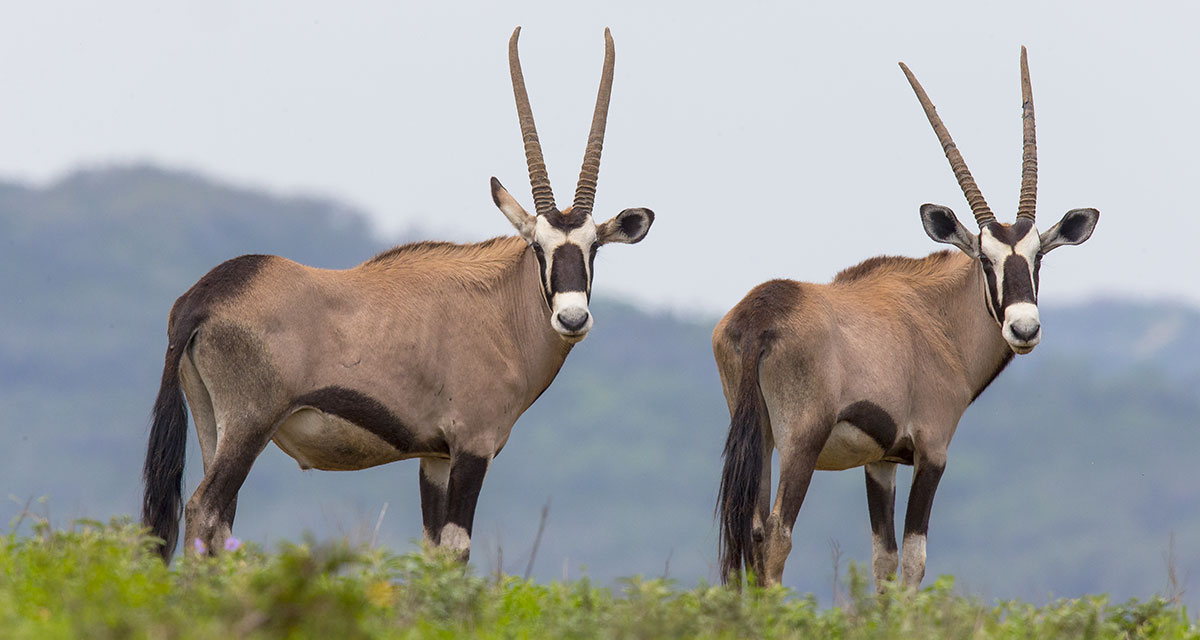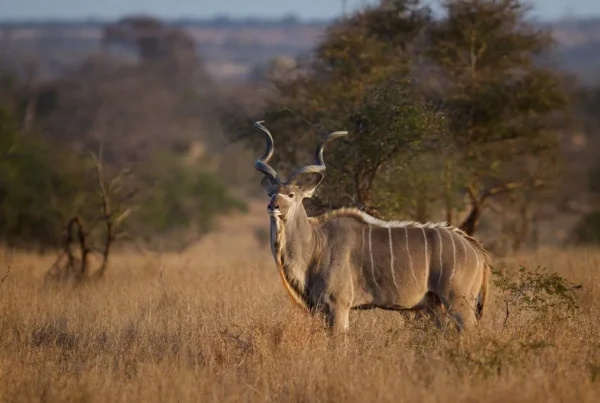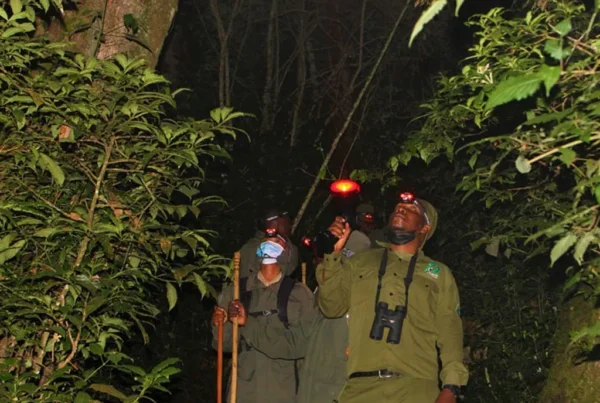5 Fascinating Facts About Gemsbok (Oryx gazella)
The Desert King of Elegance and Endurance
With its sleek, muscular build, striking black-and-white facial markings, and long, spear-like horns, the Gemsbok (Oryx gazella) is not only one of the most visually captivating antelopes in Africa, but also a symbol of survival and strength in some of the harshest environments on Earth.
Thriving in deserts and arid regions where few others dare roam, this majestic antelope has evolved to meet extreme heat and scarce resources head-on. But there’s more to the Gemsbok than meets the eye. Beneath its graceful exterior lies a creature of remarkable adaptability, clever defense mechanisms, and social complexity.
Let’s dive into five astonishing facts about the Gemsbok that reveal why it deserves far more attention than it often receives.
1. Built for the Desert: The Gemsbok’s Survival Engineering
The Gemsbok is a master of adaptation. Native to southern Africa’s deserts and dry savannas, including the Kalahari and Namib deserts, this antelope has developed specialized physiological mechanisms to cope with high temperatures and low water availability.
Water Independence {Facts About Gemsbok}
Unlike many other animals, Gemsboks can go weeks without drinking water. Instead, they extract moisture from their food, which includes tough desert grasses, wild melons, and underground tubers. Their kidneys are highly efficient, producing concentrated urine to retain as much fluid as possible.
Cooling the Brain
The Gemsbok has a remarkable thermoregulatory system. A network of blood vessels known as the carotid rete mirabile cools blood before it reaches the brain, allowing the Gemsbok to survive in temperatures that would otherwise cause heatstroke.
This evolutionary masterpiece enables the animal to function in midday heat that can soar above 45°C (113°F) – a true testament to desert resilience.
2. Horns of Defense and Status (Facts About Gemsbo)
Perhaps the most iconic feature of the Gemsbok is its impressive, straight horns, which can grow up to 85 centimeters (33 inches) in both males and females. These horns are not just for show; they play crucial roles in defense, social hierarchy, and mating.
Lethal Weapons
Gemsboks use their horns to fend off predators, including lions and hyenas. There are documented cases where lions have been fatally gored by Gemsbok defending themselves or their young. The horns’ length and sharp tips make them powerful tools of survival and deterrence.
Social Signaling
Within herds, horn size and symmetry can signify dominance and maturity. Although physical battles are rare, individuals will spar with locked horns in controlled displays to establish hierarchy without serious injury.
This use of weaponry for both defense and diplomacy is a fascinating example of evolutionary dual-purpose design.
3. Striking Appearance with Purpose
The Gemsbok is arguably one of the most aesthetically stunning antelopes in the animal kingdom. Its sharp black-and-white facial markings, contrasting with a greyish-tan body and black stripes along its flanks and legs, give it an almost regal presence.
Camouflage and Communication
The bold patterns serve more than decorative purposes. The facial markings help with species recognition and communication, especially from a distance. Meanwhile, the body stripes act as a form of disruptive camouflage that breaks up the animal’s outline against the dappled light of desert environments.
The markings may also reflect thermal advantages, helping the Gemsbok regulate heat absorption by breaking up the body surface exposed to sunlight.
4. A Social Yet Independent Herd Animal
Gemsboks are highly adaptable in their social behavior. They can live in small family groups, large mixed herds, or even solitary for long stretches, depending on environmental conditions and availability of resources.
Flexible Social Structure
Herds typically consist of 10 to 40 individuals, including both males and females, but they can swell to over 100 during migrations or in resource-rich areas. This flexibility is a key to their survival in unpredictable desert ecosystems.
Gender Dynamics and Leadership
Interestingly, in Gemsbok society, dominant females often take leadership roles, guiding the herd and choosing grazing paths. Males may maintain territories and protect access to females, but they typically do not dictate herd movement.
The ability of Gemsbok to shift social patterns according to ecological pressures is a testament to their behavioral intelligence.
5. A Keystone Species and Ecosystem Contributor
Despite being overshadowed by larger or more predatory animals, the Gemsbok plays a vital role in the ecosystems it inhabits.
Maintaining Grassland Balance
As grazers, Gemsboks help maintain the health and balance of grassland ecosystems. Their grazing encourages regrowth, controls invasive plant species, and supports nutrient cycling. This helps create habitats suitable for smaller herbivores and ground-dwelling birds.
Prey and Predator Dynamics
Though equipped with formidable defenses, Gemsbok are an essential part of the desert food web. Predators such as lions, leopards, and African wild dogs rely on antelope populations like the Gemsbok to sustain their numbers. The balance between predator and prey ensures biodiversity and ecological stability.
Their scavenged carcasses also provide nutrients to a variety of secondary consumers, from vultures to jackals.
Final Thoughts: Gemsbok, A Desert Marvel Worthy of Admiration
The Gemsbok (Oryx gazella) is far more than a decorative figure on the arid African horizon. It is a creature of biological brilliance, visual elegance, and survival mastery. From its heat-defying physiology to its powerful horns and intricate social behavior, the Gemsbok represents the spirit of adaptation and endurance in one of Earth’s toughest climates.
By studying and appreciating animals like the Gemsbok, we gain deeper insight into the delicate balance of life that deserts and drylands maintain. These antelopes remind us that beauty, strength, and resilience often go hand in hand in the natural world.
See the Gemsbok in Its Natural Habitat with WildHorn Africa
To witness the majesty of the Gemsbok firsthand, there is no substitute for an authentic African safari. WildHorn Africa specializes in crafting unforgettable journeys into the continent’s most breathtaking wilderness areas — including the deserts of Namibia and Botswana, where the Gemsbok reigns supreme.
With expert guides, eco-conscious planning, and tailor-made itineraries, WildHorn Africa ensures that your safari experience is immersive, enriching, and unforgettable.
Book your African adventure today with WildHorn Africa – and meet the desert’s most majestic antelope in person.
Facts About Gemsbok #Facts About Gemsbok Facts About Gemsbok





 WildHorn Africa – Authentic and unforgettable tours across Africa, guided by local experts who know the land, wildlife, and culture best.
WildHorn Africa – Authentic and unforgettable tours across Africa, guided by local experts who know the land, wildlife, and culture best.


